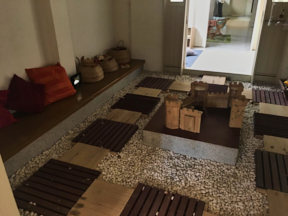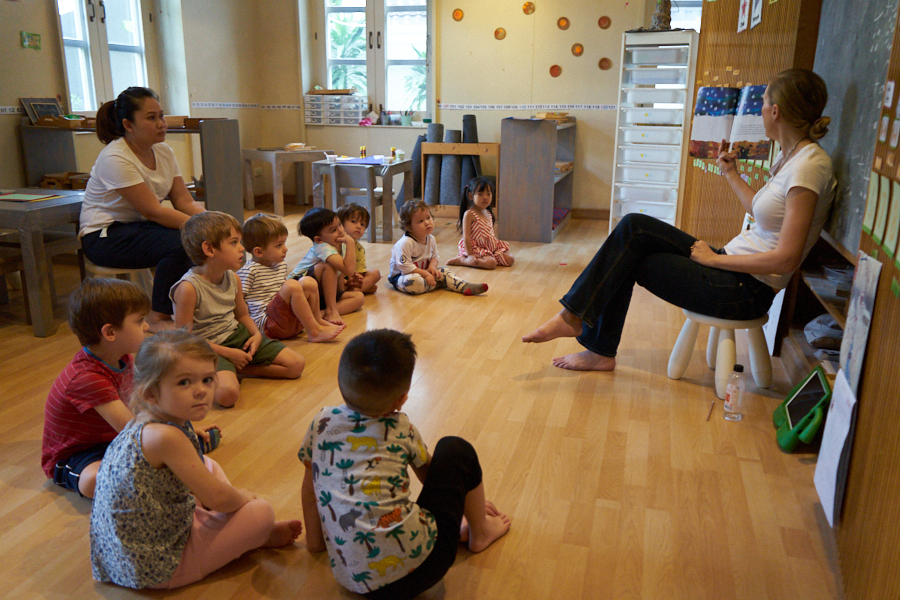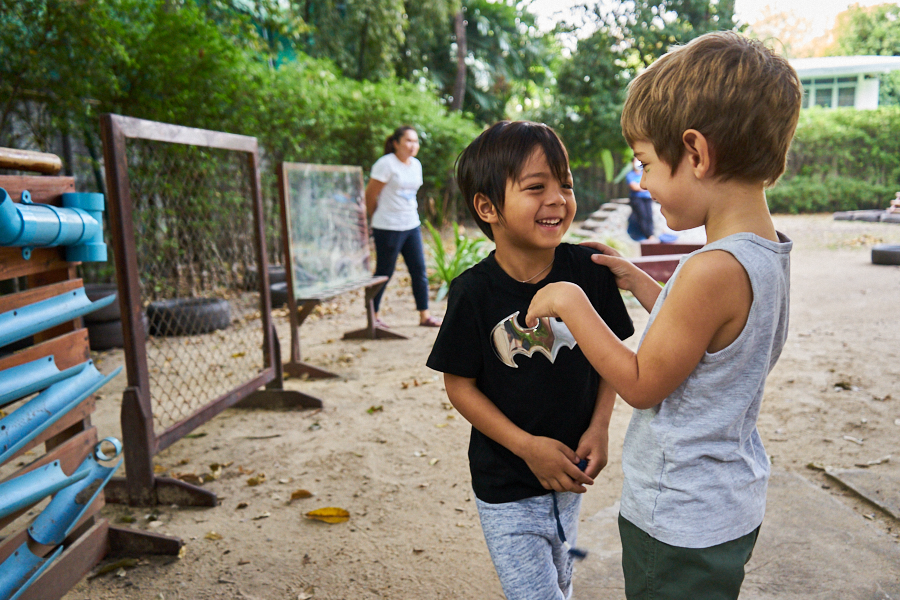In the Sathorn-Yenakart district of Bangkok, in the middle of a beautiful park full of trees, is a kindergarten that is out of the ordinary. Based on the French National Education program which recognizes it since July 2019, this school is inspired by Montessori and Reggio pedagogies as well as the work of Catherine Gueguen and Céline Alvarez, in order to offer children 2 1/2 at 6 years old who frequents it, an inspiring, caring environment that respects everyone’s rhythm. Today, we invite you to go with us to discover La Petite École!

Upon arrival, the beauty of the nature surrounding the school and the calm of the place amaze us. We’re still in the heart of a lively district of Bangkok! But with all the vegetation that surrounds it, its high fence that disappears under the greenery and the obvious care that has been taken to integrate the play area into the natural environment of the courtyard, we instantly forget the place where we is located. From 8 a.m. each morning, a little more than forty little elves aged 6 and under, the vast majority of them children of expatriates from several countries of the world, gather under the trees to enjoy a moment of games before starting their learning day. Here, we hear mostly English and French. The school is bilingual. Children benefit from alternating between French and English throughout the week. Every other day is in French, with one teacher whose mother tongue is the other and the other in English, with another teacher whose mother tongue is also the main language. On Friday, when the children are only at school in the morning, instruction is in English and French, in the presence of the two teachers. When they leave school, they will speak at least two languages fluently in addition to having a base in Thai since the Little School also offers an introduction to this language and its culture. A huge opportunity for these toddlers.


A day at the Little School
At 8:20 am, at the sound of the bell, the children gathered to enter the school and join their first class of the day. Here, they are divided into 3 groups, multi-ages, and they can count on the help of their teacher of the day and their Thai assistant. The school is divided into three main classes which group together workshops on the same theme. The first includes everything related to language, writing and reading, the second includes mathematics and science, and the third includes workshops on practical life and culture. Each group will move from one class to another during the day, taking advantage of all the learning available. In each environment, they will have the chance to freely choose the workshop that attracts them that day and can work there as long as they want before moving on to the next. Here, children mostly learn with their senses and manipulation is at the center of learning. In the afternoons, during the siesta of the youngest, the oldest children take part in activities whose objective is to prepare them for their entry to school. On Friday, the program is different and the activities more directed. The children, always divided into 3 groups, will start the day with a presentation. Indeed, each week, they bring from the house an object that they wish to present to their friends, the objective being to allow them to work on oral communication and listening. Depending on the week, they will have to give their presentation in English or French and this will be followed by a question period from the other children in the group. When this step is complete, the teacher will tell a story and the children will work on their annual project. This year, they discovered the world and during our visit, on a Friday, they were working on Asia and more particularly Japan. This day was dedicated to the plastic arts and the children therefore had the chance to contribute to several collective works, inspired by Japanese art, a local artist or traditional clothing. And throughout the morning, in small groups, the children joined their swimming teacher who, thanks to the school’s swimming pool, taught them to swim each week.



Here, the school day begins at 8:00 a.m. and ends at 2:45 p.m., except Friday when it ends at 12:00 p.m. From Monday to Thursday, parents can choose to enroll their children in an optional after-school course, which will end at 4:30 p.m. Depending on the day, they can take advantage of swimming lessons, yoga, football (soccer), a martial arts class (which they call Ninja), or even daycare time. Here, snacks are provided by the school and lunch is delivered daily by an external canteen. What we are seeing, again here, is that children’s days are much shorter than in Canada! To me, this fact raises interesting questions. What do you think?


This school, which is just over 2 and a half years old, is part of a group of schools, the first of which was opened in Singapore in 2012. The director, Marie Nicou, will explain to us that the pedagogy developed here is based on 4 main pillars: multi-age, autonomy, caring and quality of the environment. Although inspired by different pedagogies, it is not based on any one in particular, leaving room for improvement and changes in connection with the most recent and most effective research and placing the child at the center of its learning. Because what we want for them here is that they develop their autonomy, their self-confidence and their desire to learn in an innovative environment, respectful and caring first and foremost. They will then be ready to integrate the school curriculum of the environment that their parents will choose later. Some of them will join the ranks of French or English international schools, others will continue their education in the Thai school system and still others will leave the country to return to their country of origin or a next country. Faced with this diversity of paths, it is therefore important to allow children to feel good about themselves, curious and fulfilled, and that is what the Little School offers them on a daily basis.



